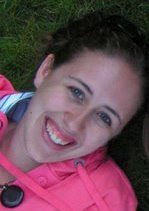
No, I don't mean the company is falling apart due to the economic crisis of 2008...
I read recently in the book
Einstein's Refrigerator, a story about the Citigroup Center building in Manhattan (the building pictured to the right with a triangular roof). The book, compiled by Steve Silverman, is a collection of believe-it-or-not stories "from the flip side of history."
In the Citigroup story, a college student from New Jersey calls the engineering firm responsible for the building, claiming a flaw in the design poses a much larger threat than anyone realizes. Out of curiousity, the chief structural engineer William LeMessurier looks at the plans and does some quick math. He finds that the design leaves the building at a 40% increase in stress if hit by a quarterly wind. However, he learns the on-site engineer decided to bolt the structure together instead of welding (as the plans dictated) and t
he math under that circumstance showed an increase in stress by 160%!!!
The other problem was the fact that one corner of the building hung over St. Peter's Lutheran Church. You can just barely see the church in the left bottom corner of the picture at the rig
ht.
To make a long story short, Citigroup wanted to keep this huge error in engineering on the "down low", so all the work done to fix this problem was done in the middle of the night. No one ever knew the building was being fixed and strengthened while they were sleeping!
No one knew, but people wondered why there was a glow near the Citigroup building every evening. LeMessurier even got a call from the New York Times at one point. Lucky for him, they went on strike that very evening!
So, needless to say, the Citigroup building is safe now. If it had ever fallen over, the Red Cross estimated it would have caused 156 city blocks worth of damage! That's almost the whole of Manhattan!!
I share this story, because it is a great way to use current events to teach Physics! The main issue of this problem is the building's center of mass and more specifically loads and torques. Students might enjoy doing the calculations LeMessurier did and determine the safety of the building themselves. Below is a quick description of the building.





.jpg)

